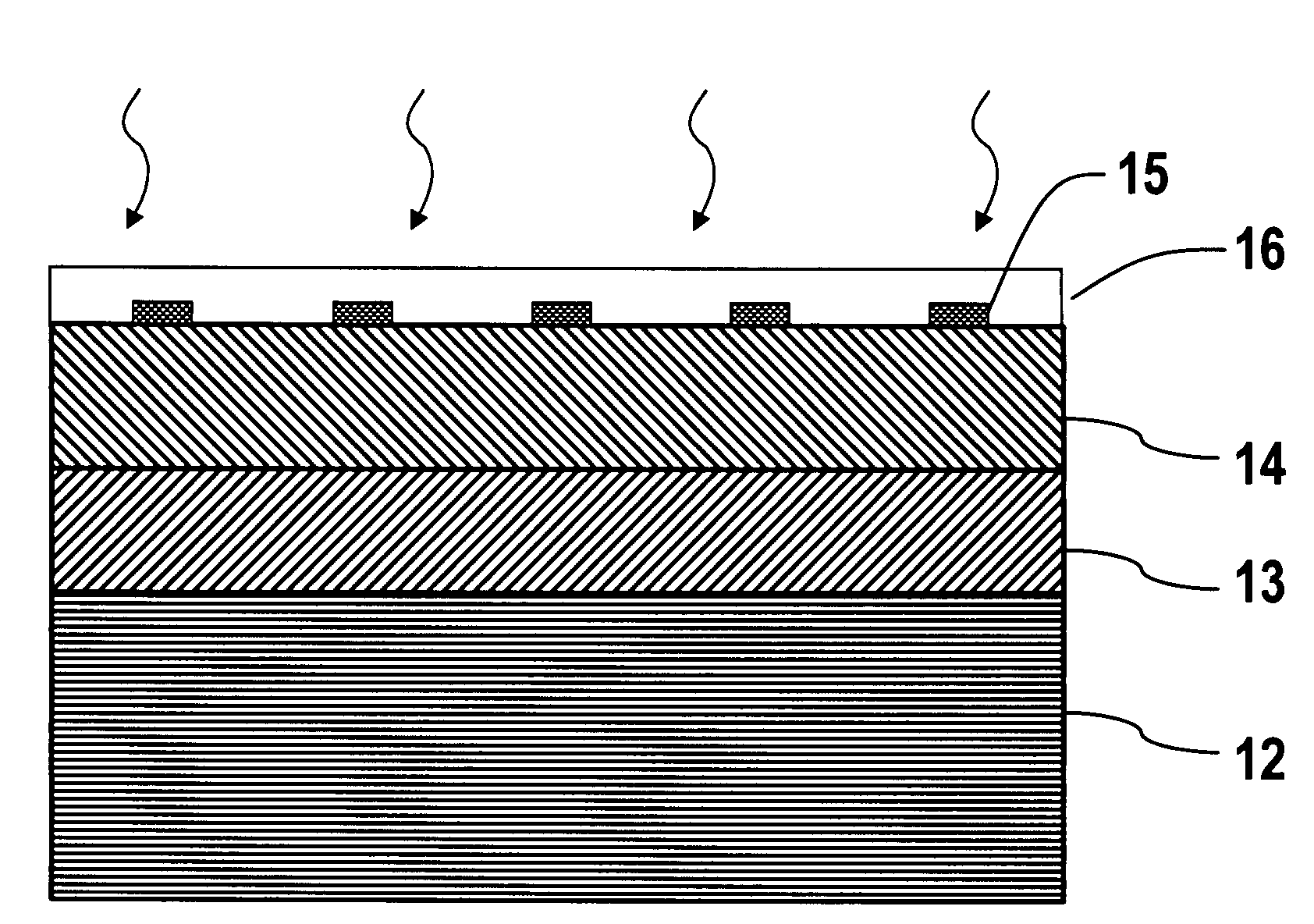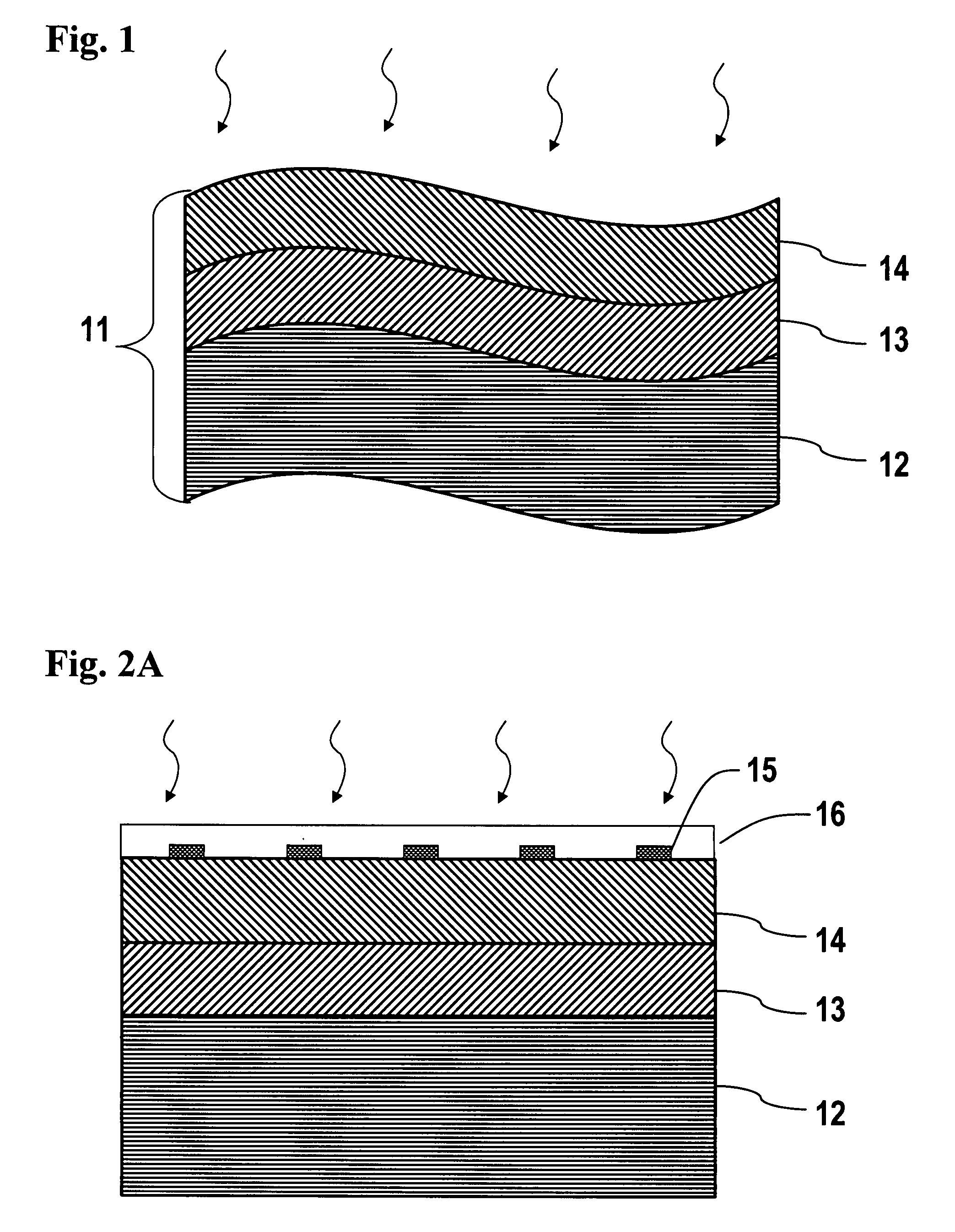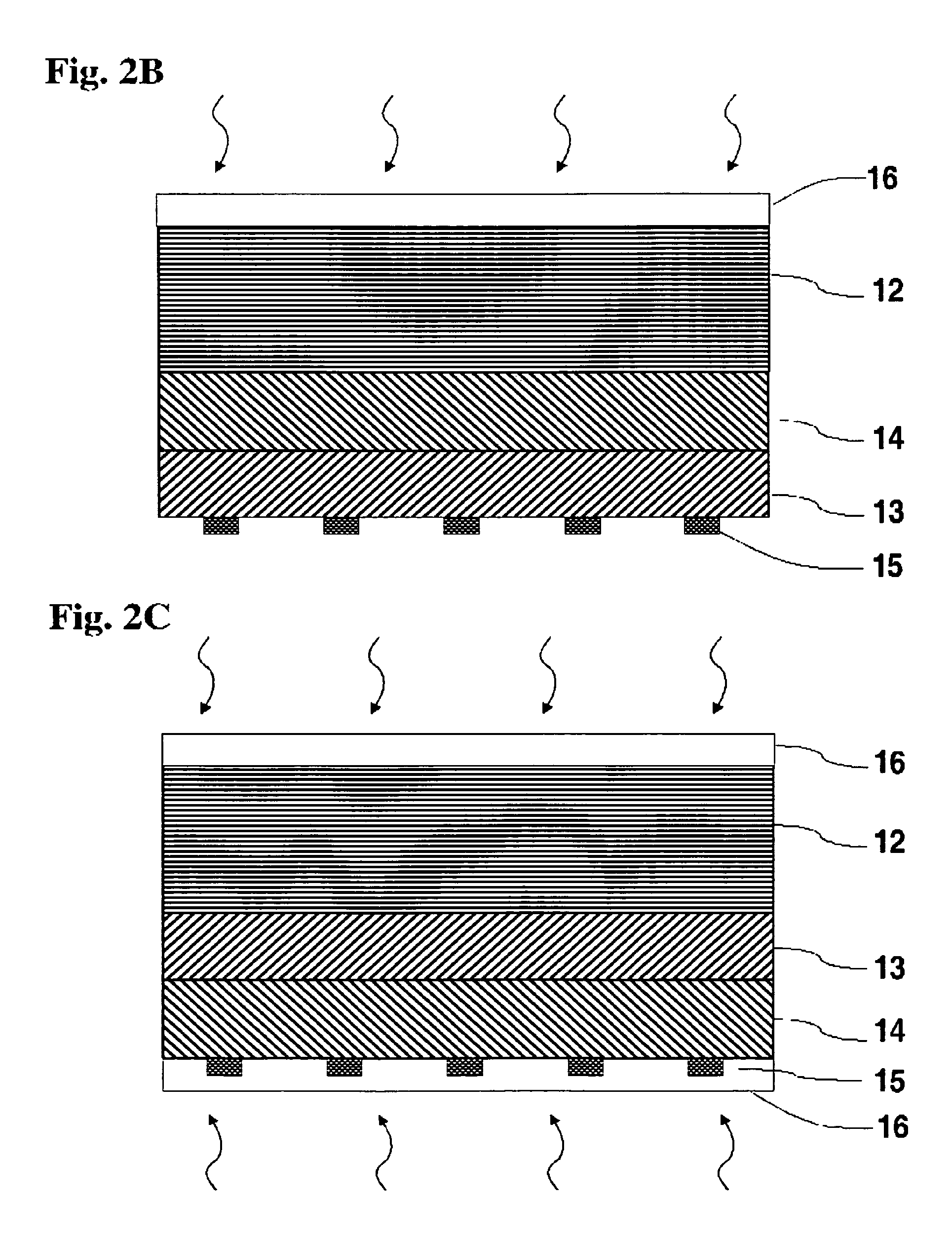Thin film solar cell configuration and fabrication method
a solar cell and thin film technology, applied in the field of thin film photovoltaic (pv) technology, can solve the problems of affecting device stability, affecting device stability, complex and hazardous vapor phase methods used in cigs deposition, etc., to reduce the number of cell components and processing steps, easy to scale up for mass production, and eliminate complexity and expense
- Summary
- Abstract
- Description
- Claims
- Application Information
AI Technical Summary
Benefits of technology
Problems solved by technology
Method used
Image
Examples
Embodiment Construction
[0038]This invention adapts the n-CIS / p-CuISe3 heterojunction formation concept, described in U.S. Pat. No. 5,286,306 to a practical device that can be mass-produced for a wide range of applications. U.S. Pat. No. 5,286,306 is hereby incorporated by reference for its teachings to make an n-CuInSe2 based thin-film cell. This invention describes a new low-cost method to produce an n-CIS absorber layer on flexible substrates and subsequent process steps to fabricate the relevant cell components. It combines the electrochemical n-CIS / p-CuISe3 heterojunction formation concept with new materials and processes, such as: (I) flexible substrate, (II) roll-to-roll fabrication (III) electrodeposition for n-CIS, (IV) ODC absorber layer, (V) electrodeposited Cu-halide or pseudo-halide window and (VI) TCO front contact.
[0039]FIG. 1 shows a basic configuration of a flexible n-CIS solar cell 11 made in accordance with the present invention. It comprises a substrate 12 on which the n-type CIS absorb...
PUM
 Login to View More
Login to View More Abstract
Description
Claims
Application Information
 Login to View More
Login to View More - R&D
- Intellectual Property
- Life Sciences
- Materials
- Tech Scout
- Unparalleled Data Quality
- Higher Quality Content
- 60% Fewer Hallucinations
Browse by: Latest US Patents, China's latest patents, Technical Efficacy Thesaurus, Application Domain, Technology Topic, Popular Technical Reports.
© 2025 PatSnap. All rights reserved.Legal|Privacy policy|Modern Slavery Act Transparency Statement|Sitemap|About US| Contact US: help@patsnap.com



